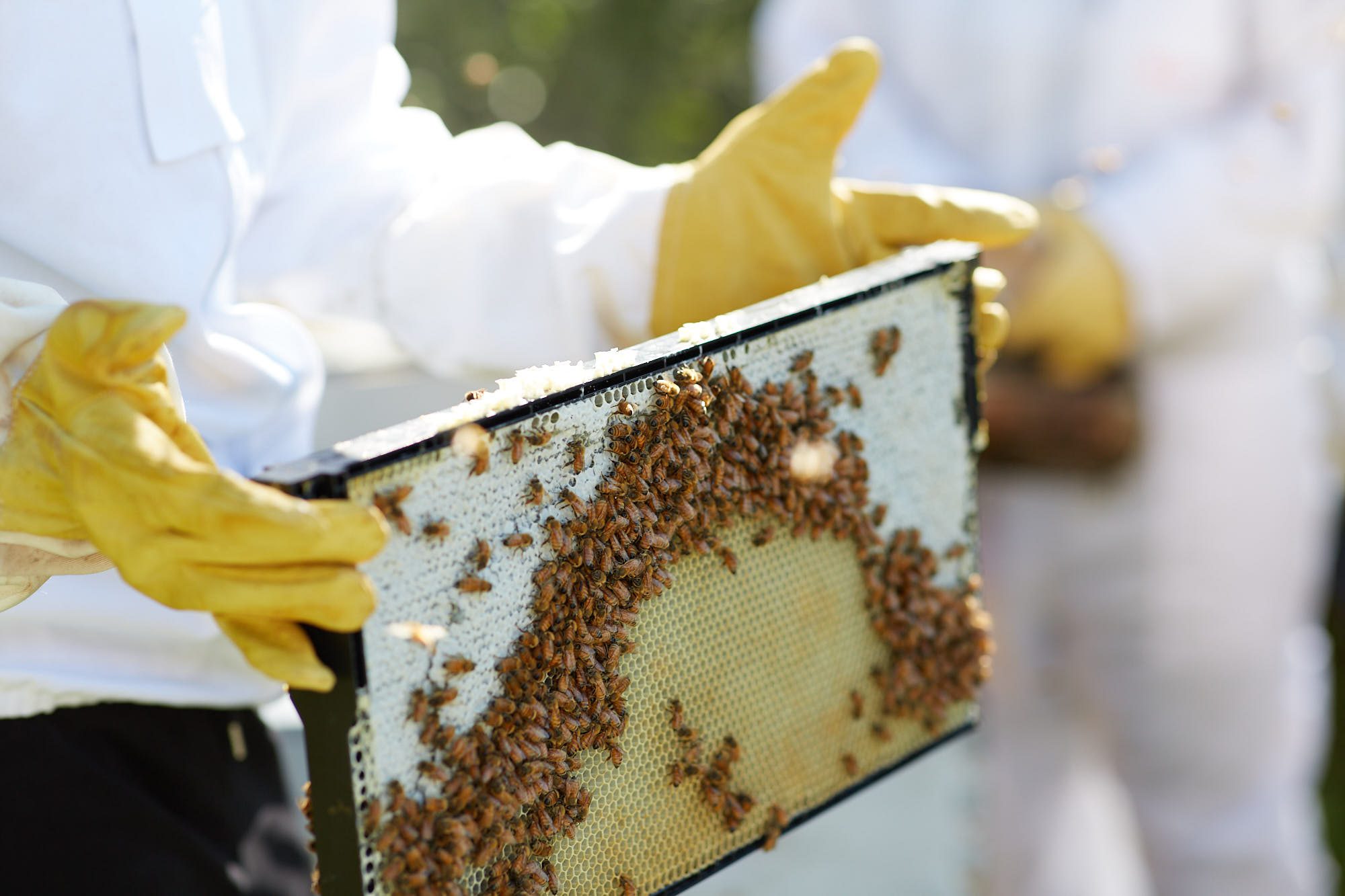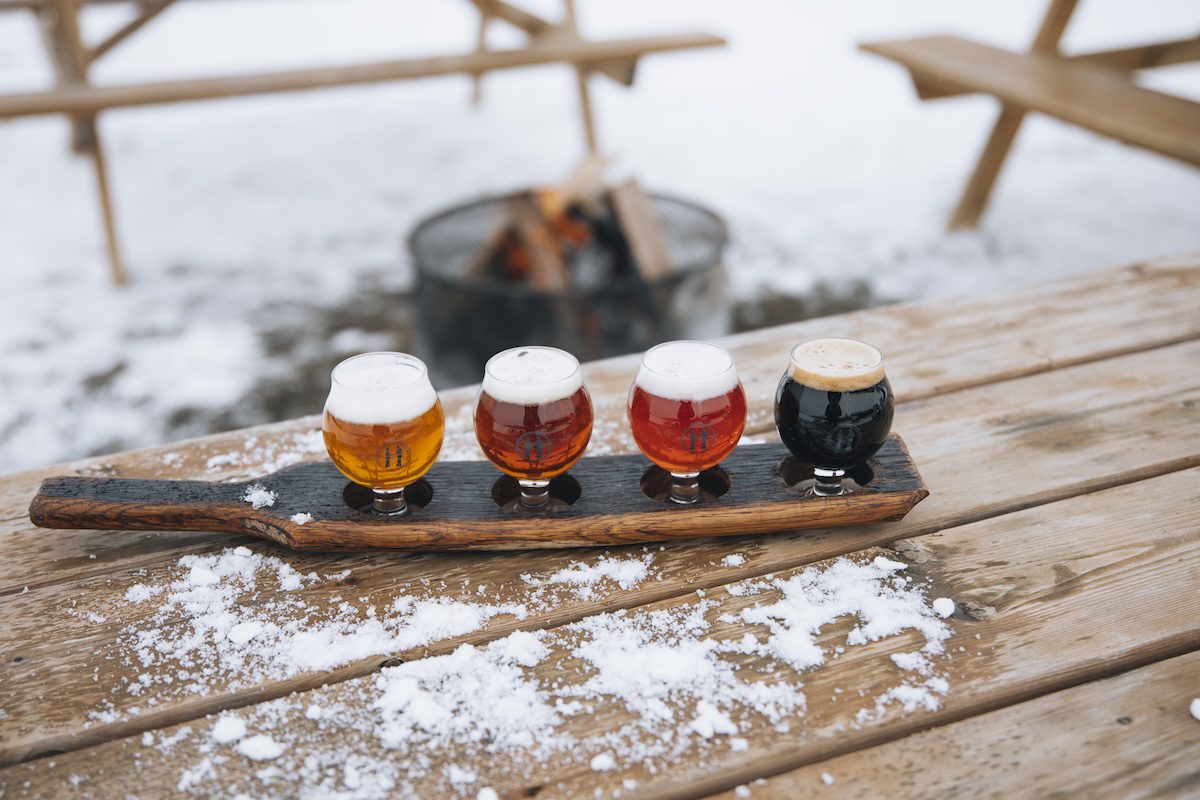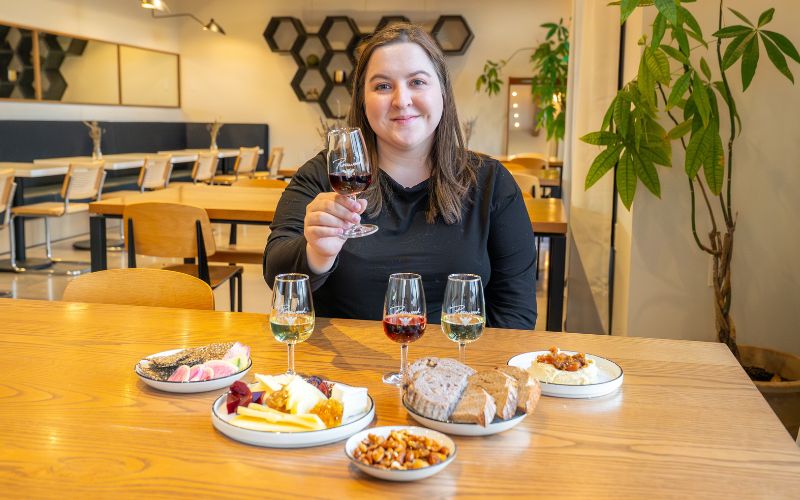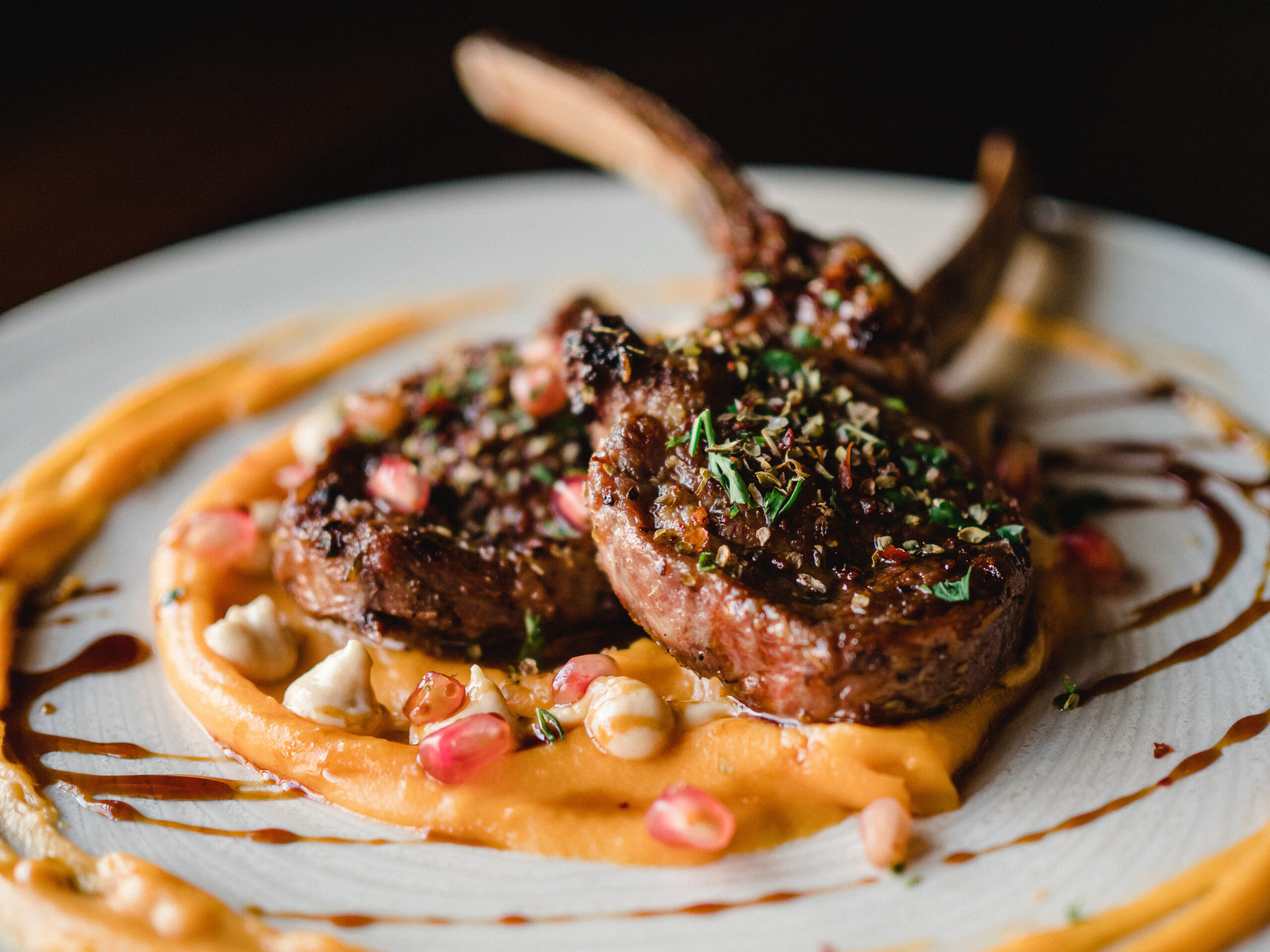Mead, a honey wine with a centuries-long history, has only been commercially produced in Ontario for a few decades – and it’s finally getting its due
It’s early on a Friday morning, and Sarah Allinson-Chorabik has a busy day ahead of her.
“We bottled about 60 cases of our dry mead yesterday,” says the co-founder of Ontario Honey Creations, whose husband Peter has been out tending some of their 600 hives since 4:30 a.m. “Today, I’m labeling those bottles. It’s really an ongoing effort,” she says of the work that goes into making their artisanal mead, a honey wine with ancient roots that’s generating brand new buzz lately.
Still, life at the meadery should be quieter than the day before, when the noise of mead being pumped from a thousand-litre tank into individual bottles filled the air of their otherwise tranquil property in Mulmur, located halfway between Orangeville and Collingwood.
“It’s chaotic,” says Allinson-Chorabik, who left the corporate world behind for full-time beekeeping and honey-producing in 2015, then branched out into mead making not long after. “But the smell of the mead is heavenly.”
And it is: think the tangy undertone of fermentation, kissed with the sweetness of honey and a lingering top note of brightness – in this case, cranberry and rhubarb, which hints at the fruit that’s been infused into this particular batch, based on a recipe brought from Poland by Peter Chorabik’s beekeeping ancestors.
“They’d do it the good old way,” laughs Allinson-Chorabik. “I joke they’d put some honey and water in a bucket, and mix it with a hockey stick.” Ontario Honey Creation’s own process, assisted by an employee with deep knowledge of the wine industry, is a touch more sophisticated these days, although the central principle remains: Use honey as the fermenting sugar, like you’d use grapes for wine or malted barley for beer, to create an alcoholic beverage.
:format(webp)/cloudfront-us-east-1.images.arcpublishing.com/tgam/V6LIF34TDRGSLHSO3C65WKORHQ.jpg)
From there, however, the creative potential is exponential, says Ryan Corrigan, winemaker at Rosewood Estates Winery and Meadery in Beamsville, right in the heart of the Niagara Benchlands fruit belt. “Within mead, there are a lot of different categories,” he notes, reeling off the options: pyment, which is honey co-fermented with grapes; metheglin, infused with spices, named after the Welsh words for “healing liquor”; and cyser, fermented with apple juice. “It’s a unique playing ground where you can experiment, where you’re either trying to showcase the honey or use it as a sugar to create a different product entirely.”
Rosewood Estates’ flagship Mead Royale, aged in barrels for six months, is one of the few meads to be found at the LCBO, and is designed to show off the honey it’s made from.
“There’s a terroir aspect to honey,” says Corrigan, referencing an idea borrowed from winemaking, where the specific landscape and soil where grapes grow is integral to a wine’s character. “Honey has a vintage variation effect, just like grape wine does. How the honey tastes depends on what the bees are out pollinating,” he explains. “If you put hives in an area where there are a lot of blueberries, or lavender, like on our farm, or in an apple or peach orchard, the characteristics come through in the resulting honey.” And, in turn, that affects the mead it makes, especially since environmental factors – like last year’s dry summer – play a major part in where bees go to find that all-important nectar.
“When we’re given the honey, we taste it and decide what kind of beverage we make,” says Corrigan, who leaves the beekeeping to others, including Rosewood’s owner Eugene Roman, who learned the skill from his father, who kept bees in his native Ukraine. This could result in anything from Rosewood’s Mead Blanc, a lighter, citrus-driven product made using its Riesling and Gewürztraminer juice, or darker, smokier drinks made using barrels that formerly held spirits like cognac or sherry.
“You can make anything that inspires you, and it’s a really fun mead-ium, pardon the pun, to work with,” says Corrigan. The owners of Ontario Honey Creations echo this sentiment; they’ve made everything from a buckwheat honey-based mead that was almost as dark and rich as Guinness, to their new fruit-flavoured seltzer-esque “session” meads in a can, to an upcoming mead infused in red wine barrels that’s going to be a rosé-like pink.
“When it comes to mead, the common misconception we’re fighting is that it’s a dessert wine,” he adds, noting the various preparations can create such different products that they’ve been able to create entire dinners where each course is paired with a different mead. “You think when you’re making wine with honey that it’s going to be sweet,” concurs Allinson-Chorabik. “And for some people that can be off-putting.”
That’s why her “entry-level” mead pick is always a dry one, which she says is “shockingly good,” because your taste buds are surprised by a crispness, followed by a hint of the honey. “It pairs nicely with any kind of food,” she adds.
Mead itself is an ancient drink – archaeologists in northern China have found traces of fermented honey on pieces of pottery dating to 7000 BCE, and we derive the word “honeymoon” from the jar of honey wine Scandinavian couples got after their wedding. Its commercial history in this province is quite a bit shorter.
“When I started making mead, there was nothing in Ontario,” recalls John Bryans of Munro Honey and Meadery in Lambton County, whose family has been farming honey since 1914, and who began making mead in the early 1990s. “I read that I could make alcohol out of honey, and I looked at my warehouse and thought, ‘I’ve got lots of honey. I should try that.’”
His early efforts were experimental and tailored to his own taste for a dry wine. While Munro’s primary product remains honey, mead now accounts for 20 per cent of its business, and Bryans only expects that to grow. “When we started selling mead in 2000, we were the first commercial meadery in the province. When I’d go and do wine shows, people would look at me like I was off my rocker,” he recalls, noting the scene in the U.S. was much more developed, even then. “It only took 20 years of selling it, but I’m starting to see people realize what mead is.”
And begin to appreciate it, as Allinson-Chorabik is discovering as well. “The best part of this is talking to people at farmers markets, and seeing them get excited about it,” she says. “We talked about doing this ten years ago, and now our hard work is paying off, and we’re seeing our dreams come true.”
Originally published on June 24th in the Great Taste of Ontario Special Report created in partnership with the Globe & Mail
